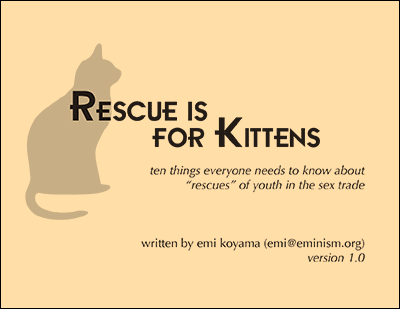In response to my post “‘Cis’ is real–even if it is carelessly articulated,” an “anti-porn, anti-queer theory, pro-choice radical feminist” asked:
Can you explain what privileges a woman receives from being born female (the class of humans oppressed on the basis of sex) and being raised as girls (the gender assigned to them to maintain the hierarchy of men > women)?
There are many “cisgender privilege” checklists out there, none of which I agree entirely with, but patterns are clear and undeniable: trans people as a group face unique sets of violence, discrimination, and marginalization, even if not all trans people experience all of them, or some cis people experience some of them as well.
I’m sure you’ve seen the lists, but if you haven’t, here are the “lists” that came up on a quick search:
- 30+ Examples of Cisgender Privilege
- The Cisgender Privilege Checklist
- Non-Trans Privilege or Cisgender Privilege List
- The Cisgender/Cissexual Privilege Checklist
- Cisgender Privilege: Unlocking the Invisible Bathroom
Privilege “checklists” have been challenged by those who wish to deny their privilege ever since Peggy McIntosh’s original “Invisible Knapsack” article came out. Any given item in the “list” may not apply to all people who belong to the privileged group, or even apply to some people who aren’t supposed to have the privilege, but that does not diminish the concept of privilege itself, whether it is male privilege, white privilege, or, yes, cis privilege.
How do women, who are disadvantaged by their sex and gender, oppress trans people with power they don’t have? Because it isn’t like race or ability, which you draw parallels to, because white people are not discriminated against on the basis of skin color and abled people are not discriminated against on the basis of their abled-ness in the way that women are discriminated against for being “cis”–that is, being female.
Cis women can have power over trans people in the same way white women can have power over people of color. But more importantly, I think the notion of “privilege” as a totalizing, all-or-nothing experience is faulty. People with different levels (or kinds) of able-bodiedness can have different level (or kind) of access to privilege, so not all people who have disability are equally oppressed or privileged. Similarly, different people of color have different level of access to white privilege depending on their socially determined access to whiteness (which, again, is not a natural category, but a socially constructed knowledge about racial differences).
In her classic work “Heteropatriarchy and the Three Pillars of White Supremacy,” Andrea Smith analyzes three different “logics” that impact various communities of color differently and yet together uphold the white supremacy in the United States. According to her, three pillars of white supremacy are: the logic of slavery, which anchors capitalism by commodifying Black people as slaves, prison laborers, etc., and by extension commodifies all workers; the logic of genocide, which anchors colonialism by vanishing indigenous people both in social reality and in imagination in order to claim the land and culture that do not belong to the white supremacy; and the logic of Orientalism, which anchors war and anti-terror or anti-immigrant policies by treating Latinos, Asians, Arabs, and other people as foreign threat and invasion.
It is not helpful to assume that all people of color are oppressed (and not privileged) by the white supremacy in the same way, or that someone who is not targeted by a particular logic of the white supremacy in a particular way are therefore white. The system that is white supremacy requires all three to operate in concert, so in order to fight the white supremacy we need to address specific ways each community is targeted.
Would it be a stretch to think that patriarchy is also a conglomerate of various different logics? Misogyny, heterosexism, and cissexism can be understood as components of what we call patriarchy, or sometimes “gender,” but each impact different communities in unique ways (which, by the way, is not to say that they don’t also overlap, for example when someone is a gay and woman = lesbian).
I am Asian, which means that I have some access to white privilege where anti-Black racism (the logic of slavery) or settler colonialism (the logic of genocide) is in operation. That does not mean that I do not experience racism, or that I have white privilege the same way white people do. Similarly, a cis woman, or a straight woman can have some access to gender privilege, even though at the same time oppressed for being a woman.
I am not interested in “drawing the line” as to how much access is enough to categorize someone as being on the privileged “side” of the oppression, because I do not think of privilege as having just two sides. What I am attempting to do is to articulate a coherent and consistent understanding of cis privilege that is compatible with existing thinking around other forms of privilege.
(An earlier edit of this article has been posted on my Tumblr page.)

